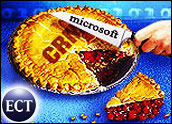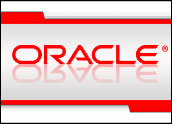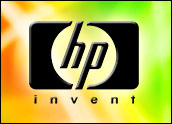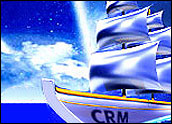
Microsoft announced in July it was stepping full force into the small- to mid-size business (SMB) market with a customer relationship management (CRM) product designed to fit into its Office software suite.
At the time, analysts said Microsoft was wise to take a bottom-up approach to the CRM office since the giants of CRM, Oracle and SAP, don’t scale down to small businesses, classified as those with between 2 and 99 employees.
Crafting a CRM product for the SMB market is a tougher proposition and it’s not because CRM isn’t useful there.
“Everyone needs some degree of CRM product,” Mary Wardley, IDC research vice president, told CRM Buyer. “I think the thing that differs is the definition of what constitutes CRM and what businesses need is going to differ.”
Coming Soon, and Affordably
Microsoft is touting the affordability of CRM 3.0, which will go out to manufacturers in the fourth quarter and become available through resellers in the first quarter of 2006.
“We built it from the ground up with the audience in mind,” Krista Kuehnbaum, CRM product manager, Microsoft Canada, told CRM Buyer. “We wanted to ensure very low TCO [Total Cost of Ownership], enhancing and keeping in mind, not just software, but ease of deployment and what customers are standardized on.”
Microsoft, she said, saw the first wave of CRM, which focused on the needs of management at large organizations as a failure because users weren’t adopting it.
“We see the next wave as driving it down to the user. We wanted to make it intuitive, make it seamless, but then can still answer the needs of the first wave, for analytics and trends data,” she said.
Familiar Interface
Microsoft CRM 3.0’s interface was designed to mimic Outlook. The software also includes close ties to Office software, which means much less training time in companies whose employees are already using Microsoft products.
In other words, what Wardley termed the “Microsoft effect.”
“This is the effect that has taken place before with Microsoft and it’s somewhat true,” she said. “If you have the Microsoft stack, adding more products is beneficial because you’re leveraging your existing products and expertise. It’s the path of least resistance; it’s a gamble to start over. Whenever you start talking about Microsoft, you can’t ignore the force of that.”
The problem, Wardley said, is that while the Office software suite works well as an off-the-shelf solution for a wide range of businesses, that is not the case with CRM, where business process varies from one company to the next and the needs of verticals differ greatly.
“CRM is different than a large number of the other application categories. There are not well-established rules of engagement. For example: What do we call customers? Do we need to keep sales history? It is not a commoditized market,” she said. That means that Microsoft will have to rely on resellers to add necessary extensions to the program for individual customers. And that cuts into the bottom line in a market in which margins are slim and volume must be high.
Why CRM?
Joe Horvath is sales director at iFusion, one of those Microsoft CRM resellers. He said customers are already seeing the benefit of Microsoft’s product, but that many businesses are still not sure of how CRM will benefit them.
“A lot of customers are a lot more savvy and becoming more savvy. They’ve used CRM in the past and they know what it can do. In [the] SMB space, this is fairly new. Some of them are still at the point of saying, ‘We know we need it, but what can it do for us?,'” he said.
Horvath also said that some of the value of Microsoft CRM comes just by virtue of the Microsoft connection.
“If you provide a tool that makes it difficult to do my job, I’m not going to use it,” he said, adding that the integration with Office makes it easy to learn as well.
Off-the-Shelf Solution
Another potential problem with selling CRM in the SMB market is that it is really several smaller market segments, which have different needs. Microsoft will release CRM 3.0, Small Business Edition, designed for companies with up to 75 employees and that use Windows Small Business Server 2003 Premium Edition at the same time as CRM 3.0. This off-the-shelf product can be installed in 10 clicks, but Wardley suggests that’s not the market the company should be aiming at.
“Microsoft CRM is in a tough spot, they have so many customers who have the capability to use it, but it was engineered for the smaller user. They had to scramble because they were under pressure from their user base to move upstream,” she said, meaning into the larger segment of the SMB market — those organizations with 500-1,000 employees.
Horavath said iFusion has Microsoft CRM customers ranging from a three-person shop to the large end of the SMB scale. About 4,000 customers now use the current version, according to Kuehnbaum.
There are plenty of CRM products out for the mid-market (Salesforce.com, Goldmine, ACT, Siebel), but they have had time to adapt and give businesses ways to tweak them to fit their needs.
With this segment of the CRM market still young, it remains to be seen how much commoditizing can be done and how long it will take, but the “Microsoft effect” is likely to have an impact.
This story was originally published on Aug. 8, 2005, and is brought to you today as part of our Best of ECT News series.




















































